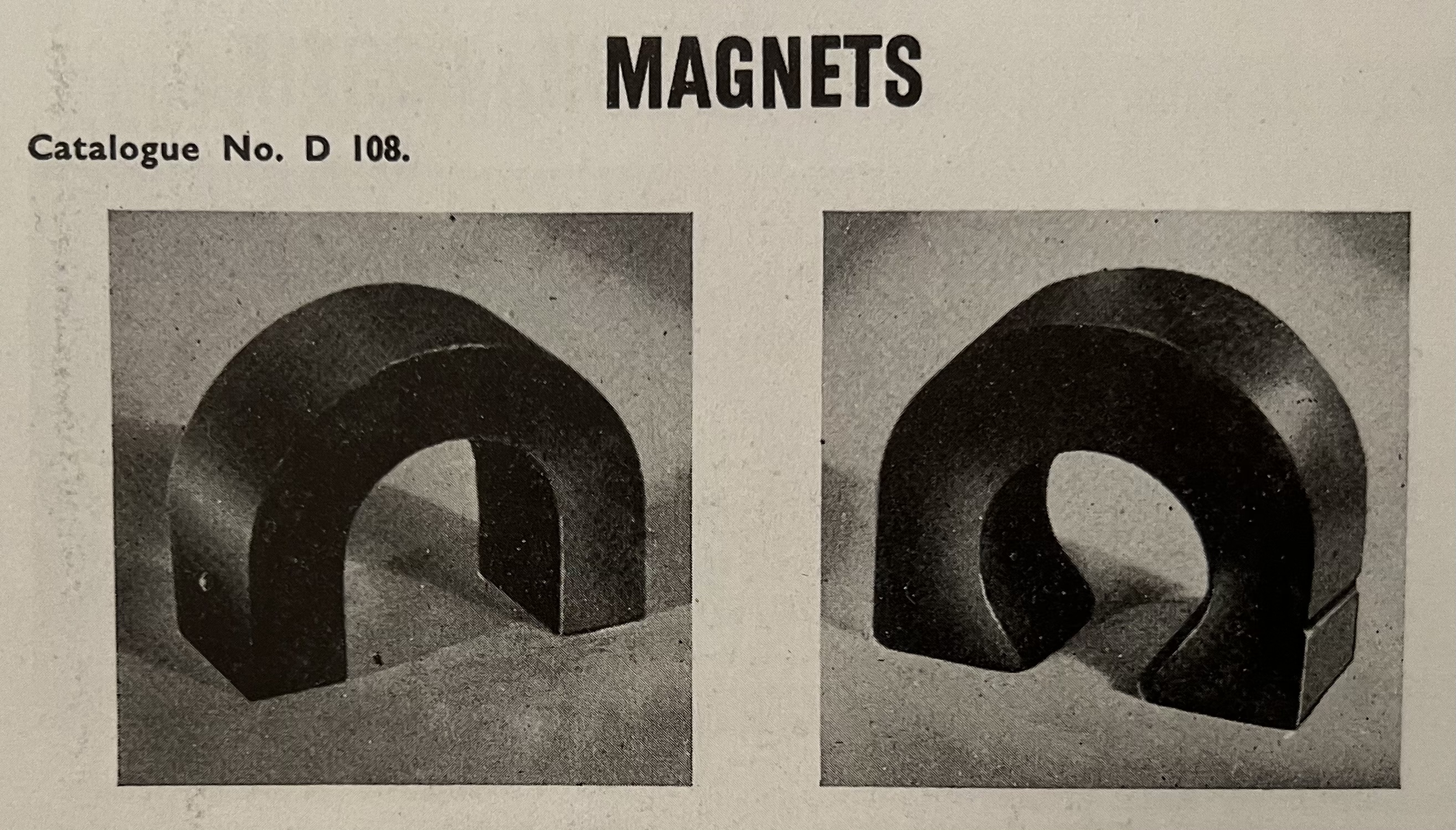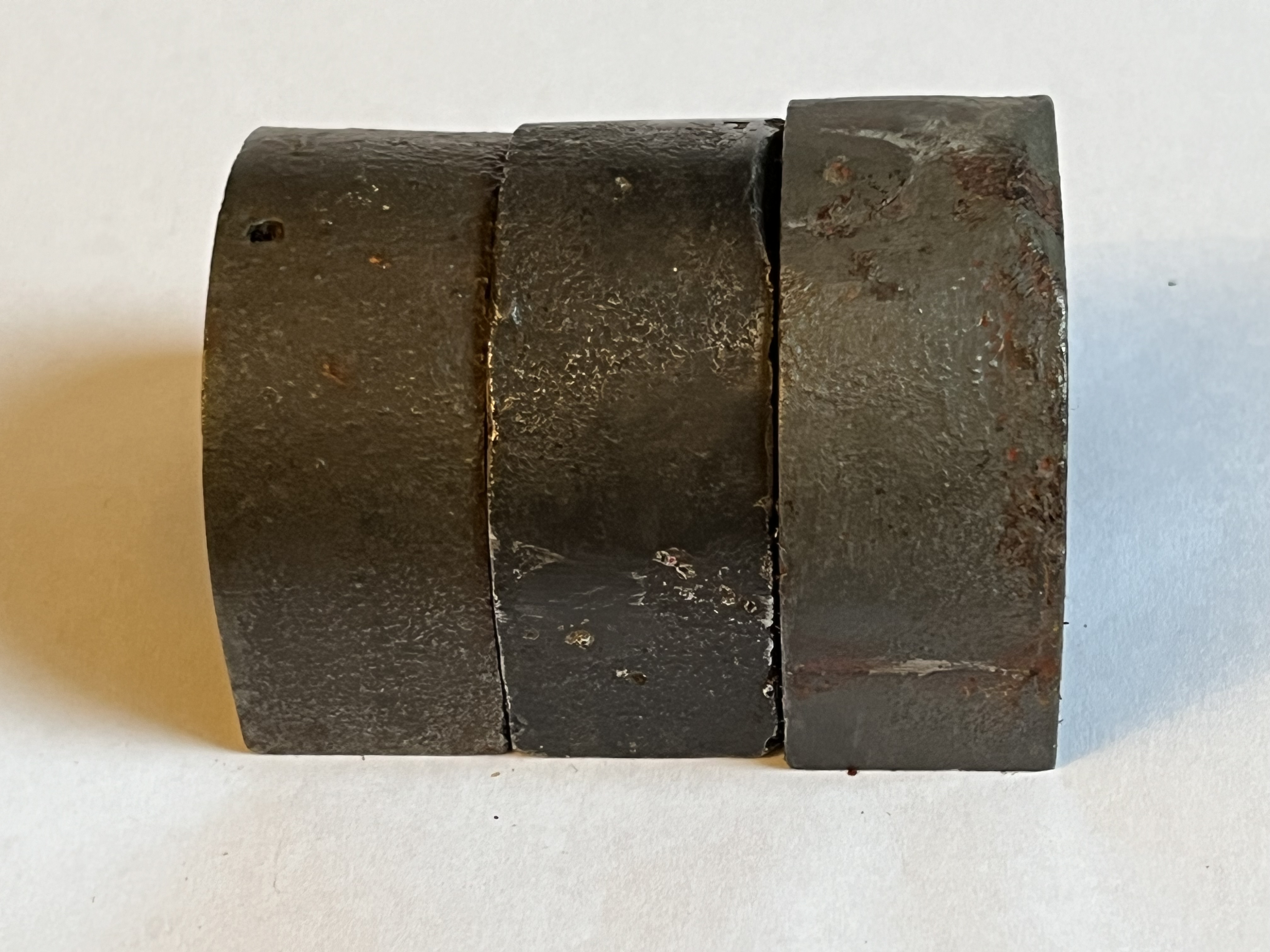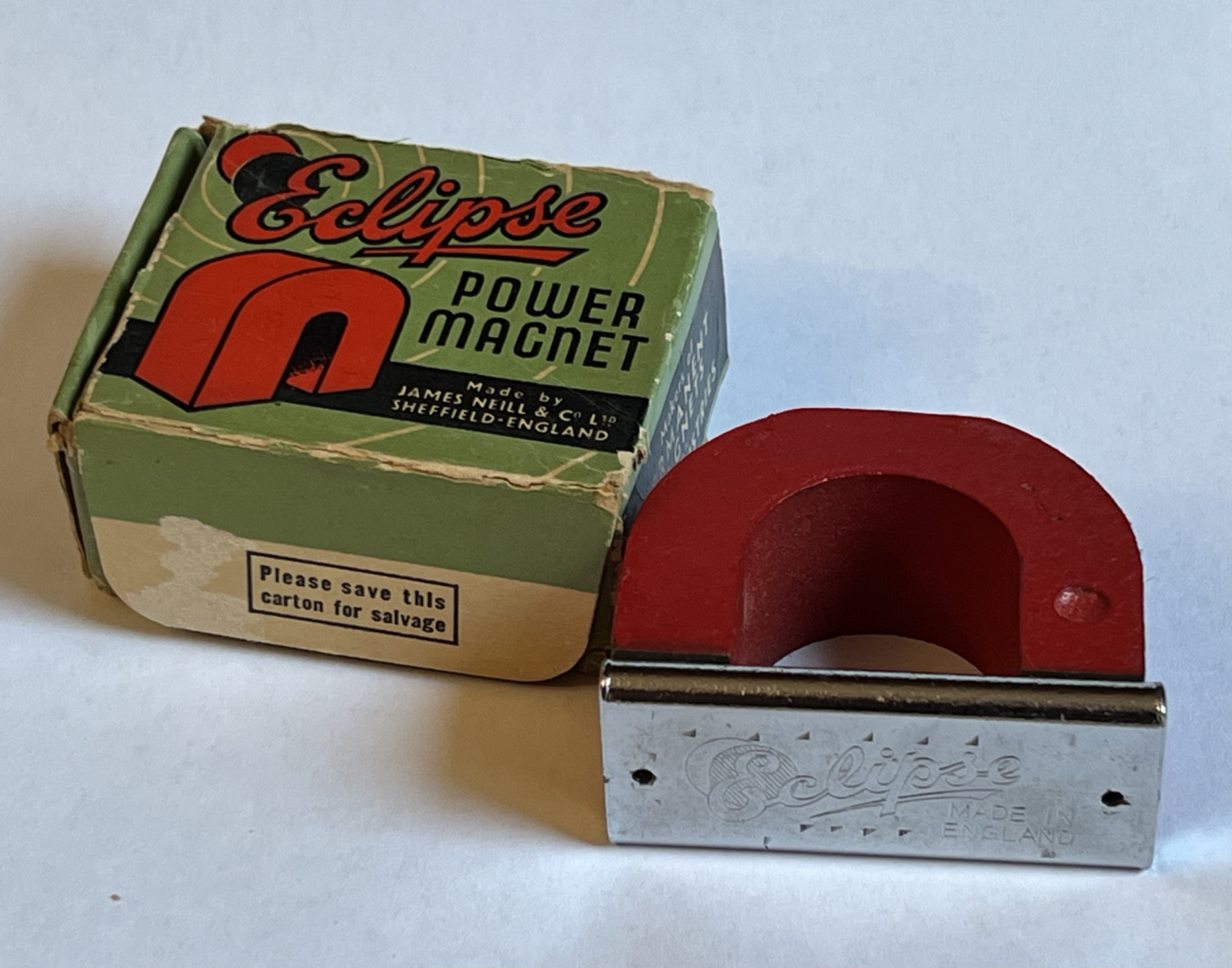Auxiliary Units documents refer to both Magnets (Large) and Magnets (Small). The Magnets (Small) first appear in a listing for the newly arriving Aux Units MkII packs first issued in Kent towards the end of 1942, each pack containing 5 pairs.
They are believed to be the same magnets listed in the SOE Catalogue of Special Devices as item D108. These magnets were also used in the Type 6 limpet mine designed at the The Frythe (Station IX) and refined at Aston House (Station XII) and the several variant mines that used the same components. They weigh 200g (7 oz), so are significantly lighter than the Magnets (Large). The SOE catalogue notes that they were packed with 120 magnets in a case measuring 51 cm (20”) x 30 cm (12”) x 15 cm (6”).
There are at least three minor variants of these magnets, though all are visually very similar and differ only slightly in their measurements. The very earliest Type 6 Limpet mines used a different shape of small magnet with five magnets each side. None of this magnet type appear to have been issued to Auxiliary Units. German photographs captured following a supply drop by SOE to the Danish resistance in July 1942 show both magnet shapes in the same drop.
The earliest revised shaped magnets are 55 mm across the poles x 24 mm wide x 42 mm high. The north pole is marked by a 5 mm drill mark on one face. These are seen on the Mk1 and Mk1A Type 6 limpet mines. The change in shape was possibly due to a change from alinco magnets to slightly stronger alcomax, an adjusted alloy.
The second type is almost identical, with two minor differences. They measure 56 mm across the poles. They also have small chamfer on the top edge, a feature introduced as it made it prevented the magnets slipping within the brass strapping used to secure them to limpet mines. Within this type there appear to be some that are slightly asymmetrical. This may represent differences in the casting moulds rather than any intentional variation.
The third version is slightly larger, 58 mm x 24 mm x 45 mm. They also have the top edge chamfer. The north pole is marked by a line engraved in the outer edge of the magnet rather than a circular depression. Examples examined of both second and third type show rust marks where they have been secured with brass strapping for mounting on limpet mines.
The differences in the second and third type may relate to different manufacturers or development over time. An example of the second type was sold as the Eclipse Power Magnet, painted red like their better known Pocket Magnet. It came with a stainless steel keeper stamped with the Eclipse logo stating Made in England. The cardboard box is stamped “Please save this carton for salvage” indicating production in the immediate post war period. Eclipse is a brand name for James Neill & Co Ltd of Sheffield, well known for making various magnetic products as well as toy magnets. Clearly they manufactured the second type at least.
Cornwall Scout Section officer and later Intelligence Officer John Dingley kept one of these magnets after the war. It is of either the first or second type as we only only have images of one side. Although some coastal areas were reported to have been issued with limpet mines, it is thought that these were of the earlier versions than the Type 6 which was issued from Jan 1942.
Aux Units Mk II contents list WO 199/937
Dick Body collection
Gardner papers via N Bonney and B Barbour
SOE Catalogue of Special Devices and Supplies 1945, reproduced in Secret Agents Handbook of Special Devices, PRO, 2000
SOE Equipment air dropped in Europe 1940-1945, Anders Thyssen and Michael Sode, 2nd Edition, 2023



